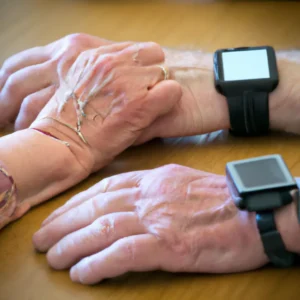Track Your Sprinting Progress with KPIs
How to Monitor Sprinting Progress: Key Performance Indicators
Sprinting requires dedication and strategy. To improve your performance, track your progress effectively. Monitoring helps you identify strengths and weaknesses. Use key performance indicators (KPIs) to guide your training decisions. This post explores important KPIs for tracking sprinting progress.
Understand the Importance of KPIs
Key performance indicators are measurable values showing how well you achieve your goals. In sprinting, these metrics provide insights into performance over time. Focus on KPIs to make informed adjustments to your training.
Tracking KPIs also motivates you. Seeing improvement encourages you to stick with your training plan. This accomplishment drives you to push harder. Additionally, KPIs help you identify performance trends. You can pinpoint areas needing work and focus on them.
Essential KPIs for Sprinting
1. Sprint Time
Your sprint time is one of the most straightforward KPIs. This metric measures how long it takes to complete a distance, such as 60 or 100 meters. Time yourself regularly during sprints for consistency.
Recording your sprint times shows improvement over weeks or months. Use a stopwatch or timing system for accuracy. Compare your times against previous performances to assess progress.
2. Average Speed
Average speed is another critical KPI. Calculate this by dividing the distance covered by the time taken. For example, if you sprint 100 meters in 12 seconds, your average speed is 8.33 meters per second.
Tracking average speed helps gauge overall sprinting efficiency. An increase in speed indicates effective training. Regularly calculate this metric to identify trends and adjust your training.
3. Stride Length and Frequency
Stride length and frequency impact your sprinting performance. Stride length measures the distance covered in one step, while frequency measures how often you take steps. Monitoring these metrics helps you understand your running mechanics.
To assess stride length, measure the distance between your footfalls during a sprint. Count your steps in a given period, like 30 seconds, to measure frequency. Tracking these metrics helps you find the optimal balance for your sprinting style.
Tips for Tracking Your KPIs
Use Technology
Leverage technology to monitor your sprinting progress. Many fitness apps and wearable devices track your times, speeds, and other metrics. These tools provide visual graphs, making it easier to analyze your performance.
Video analysis can also help assess your form and mechanics. Recording your sprints allows you to observe technique and make adjustments.
Maintain a Training Log
Keep a detailed training log to track your progress. Record your times, speeds, stride lengths, and frequencies after each session. This log serves as a valuable reference over time.
Incorporate notes about your training conditions. Note whether you sprinted on a track or grass. Understanding how surfaces affect performance can refine your training approach.
Set Realistic Goals
Set realistic goals for effective progress monitoring. Break larger goals into smaller, manageable targets. For instance, aim to improve your sprint time by a fraction of a second each month. Smaller goals keep you motivated and focused.
Celebrate your success once you achieve a target. This recognition reinforces your commitment to training. It provides a sense of accomplishment that drives further improvement.
Benefits of Monitoring Sprinting Progress
Monitoring your sprinting progress offers several benefits. First, it enhances your understanding of your body. Analyzing your KPIs helps you learn what works best for you.
Second, tracking helps prevent injuries. You can identify overtraining by monitoring your performance. Adjusting training intensity based on your KPIs minimizes injury risk.
Finally, tracking progress builds confidence. Each improvement boosts your self-esteem. This confidence can lead to better performance in the long run.
Conclusion
Monitoring your sprinting progress is essential for improvement. Focus on key performance indicators like sprint time, average speed, and stride metrics. Utilize technology, maintain a training log, and set realistic goals to enhance tracking efforts.
The benefits of monitoring are significant. You will understand your body better, prevent injuries, and build confidence. Embrace these strategies, watch your sprinting performance soar, and start tracking today.
Below are related products based on this post:
FAQ
What are key performance indicators (KPIs) in sprinting?
Key performance indicators (KPIs) are measurable values that help you assess how well you are achieving your sprinting goals. They provide insights into your performance over time and include metrics such as sprint time, average speed, and stride length and frequency. By focusing on these KPIs, you can make informed adjustments to your training and track your progress effectively.
How can I track my sprinting progress effectively?
To track your sprinting progress effectively, utilize technology such as fitness apps and wearable devices that monitor your times and speeds. Additionally, maintain a detailed training log where you record your metrics after each session, including times, speeds, stride lengths, and conditions. Setting realistic goals and breaking them into smaller targets can also help maintain motivation and focus.
What are the benefits of monitoring my sprinting progress?
Monitoring your sprinting progress offers several benefits, including a better understanding of your body and how it responds to training. It helps prevent injuries by allowing you to identify signs of overtraining and adjust your training intensity accordingly. Furthermore, tracking your progress builds confidence as you see improvements, which can lead to enhanced performance in the long run.















Post Comment